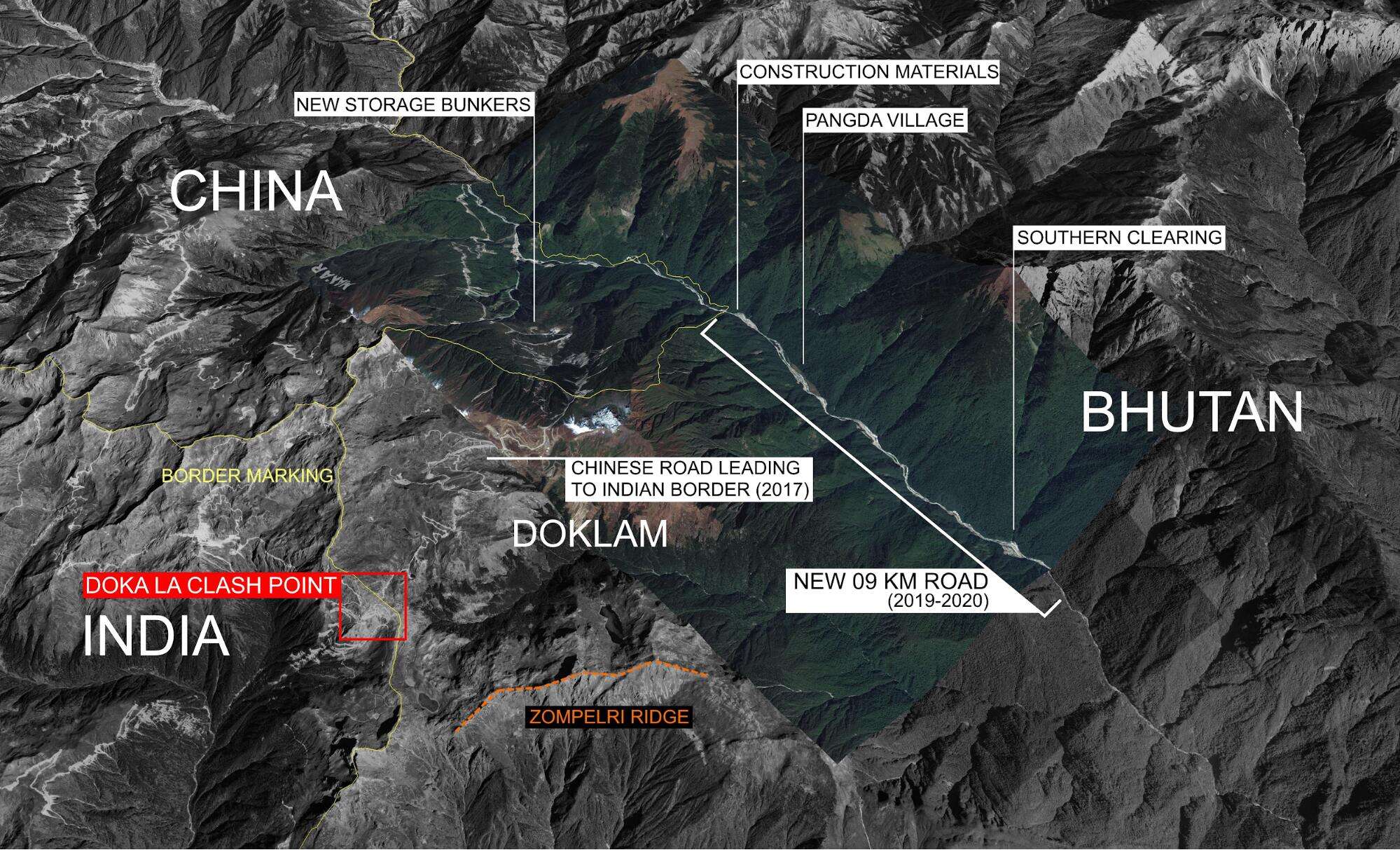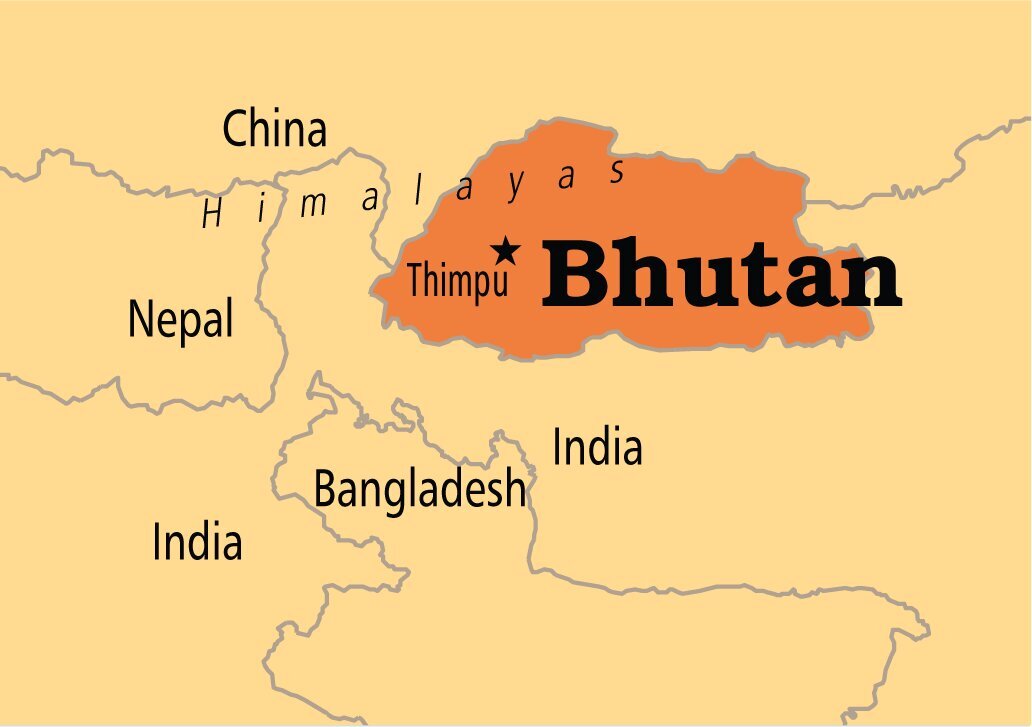New Chinese Village in Bhutan | 24 Nov 2020
Why in News
Recently, Chinese media has claimed that a new border village built by China near Bhutan was on Chinese territory.
- However, the released images of the village show its location on territory disputed by the two countries.
Key Points
- The village of Pangda has been newly built and authorities in Yadong county (an administrative region) of Southwest China’s Tibet Autonomous Region have confirmed that 27 households with 124 people voluntarily moved from Shangdui village to Pangda village in September 2020.
- It is for the first time since 2017 that a Chinese residential area has been noticed near the Doklam region, which is strategically important for India.
- Pangda is east of the India-Bhutan-China trijunction on the Doklam plateau, which was the site of a 72-day stand-off in 2017 triggered by China’s road-building up to where it sees its border.
- Bhutan’s Stand: It has officially denied the presence of any Chinese village in its territory.
- India’s Stand: India sees it as an attempt by China to unilaterally push the trijunction further.
- China in the past too, has tried to reinforce its territorial claims in disputed areas with the neighbouring countries by building civilian settlements.
- For example, on disputed South China Sea islands and Bhutan’s Trashigang district.
- China’s Stand: According to China’s maps, the village is within China’s territory.
- It also blames India for the unsettled China-Bhutan border and stalled negotiations by creating the illusion that China is encroaching on Bhutanese territory.
Indo-Bhutan Relationship
- Indo-Bhutan Treaty of Peace and Friendship, 1949:
- The treaty provides for, among other things, perpetual peace and friendship, free trade and commerce and equal justice to each other’s citizens.
- In 2007, the treaty was re-negotiated, and provisions were included to encourage Bhutan’s sovereignty, abolishing the need to take India’s guidance on foreign policy.
- Multilateral Partnership:
- Both of them share multilateral forums such as South Asian Association for Regional Cooperation (SAARC), Bangladesh, Bhutan, India, and Nepal Initiative (BBIN), Bay of Bengal Initiative for Multi-Sectoral Technical and Economic Cooperation (BIMSTEC), etc.
- Hydropower Cooperation:
- Agreement on Cooperation in Hydropower 2006: Under a protocol to this agreement, India has agreed to assist Bhutan in the development of a minimum of 10,000 MW of hydropower and import of surplus electricity from the same by 2020.
- Trade:
- The trade between the two countries is governed by the India Bhutan Trade and Transit Agreement 1972 which was last renewed in November 2016.
- The agreement establishes a free-trade regime between the two countries and also provides for duty-free transit of Bhutanese exports to third countries.
- Economic Assistance:
- India is Bhutan’s leading development partner. Since the launch of the First Five Year Plan (FYP) of Bhutan in 1961, India has been extending financial support to Bhutan’s FYPs.
- India has allotted Rs. 4500 crore to Bhutan’s 12th FYP (2018-23).
- Educational and Cultural Cooperation:
- A large number of college-going Bhutanese students are studying in India. The Government of India provides a number of scholarships to Bhutanese students.
- Environment:
- In June 2020, the Union Cabinet approved the signing of a Memorandum of Understanding (MoU) with Bhutan for cooperation in the field of environment protection and management of natural resources.
- Support during Pandemic:
- India has maintained close coordination with Bhutan and has included it in plans for containment of the Covid-19 pandemic.
- It launched the second phase of the RuPay card in Bhutan to increase the domain of digital transactions in Bhutan.
- Bhutan is the second country to accept the RuPay card after Singapore.


